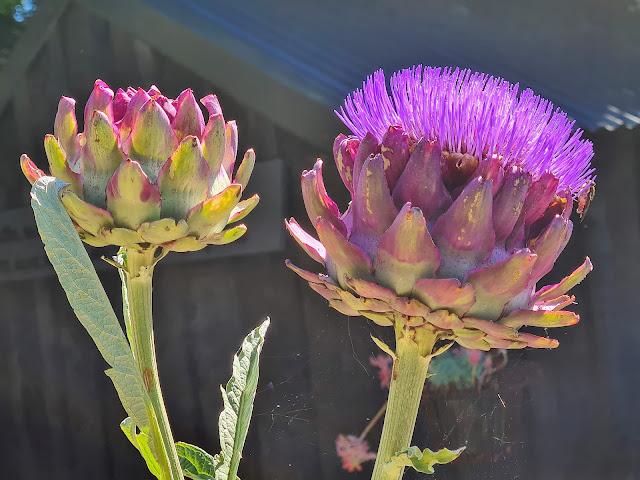Spineless thistle may still be troublesome
The Giant Knapweed, Centaurea macrocephala (the species name being Ancient Greek for 'big head'), ought to be a problematic weed in Australia.
Many of the 700 species of Centaurea, particularly the spiny ones, are better known as thistles, a collective term for problematic weeds of agriculture and disturbed bushland in Australia.
The Giant Knapweed has been reported as a 'naturalised' species in Australia, but apparently only once, from 'disturbed ground in the Falls Creek Alpine Village' in Victoria, where it presumably escaped from a nearby garden in the village.In North America, however, Giant Knapweed is a listed invasive species. As in Australia, it is still grown there in horticulture, being introduced from the Caucasus region (also Iran and Turkey) to the USA in the early nineteenth century; and grown then by Thomas Jefferson. Today it is classified as a noxious weed in a few counties in USA and Canada, and naturalised more widely.
Because it's generally without spines - there may be some around the flowerhead - it feels more acceptable than other 'thistles' in a perennial border such as this one at Cloudehill, in the Dandenongs near Melbourne. Personally I quite like thistles generally, particularly on the roadsides in southern Europe, where they feel (and to some extent are) a little more indigenous.
This particular species, the Giant Knapweed, adds both a big, bold yellow flowerhead to a border, followed by this also attractive cluster of bracts around the developing seed.
It's not the only species of Centaurea we grow deliberately. The Cornflower, Centaurea cyanus, and one of a few plants called Dusty Miller, Centaurea cinerarea, are two another popular 'thistles' from in our gardens.
But I thought I'd finish up with an obvious thistle from another genus, the Globe Artichoke. Cynara cardunculus is of course cultivated as a vegetable, and this picture comes from Cloudehill's produce garden. It can also make a fine addition to a summer border, if you are a little adventurous.
The species itself is a promiscuous weed in Australia, and a declared noxious weed in Victoria, but I'm not sure that the edible form sets viable seed.
In any case, be careful, both of spines (if present) and where you plant these strikingly attractive species.




Comments